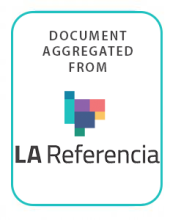Land Library
Bienvenido a la biblioteca de Land Portal. Explora nuestra amplia colección de recursos de acceso abierto (más de 74.000), que incluye informes, artículos de revistas científicas, trabajos de investigación, publicaciones revisadas por pares, documentos jurídicos, vídeos y mucho más.
/ library resources
Showing items 1 through 9 of 384.Low productivity cattle ranching, with its linkages to rural poverty, deforestation and greenhouse gas (GHG) emissions, remains one of the largest sustainability challenges in Brazil and has impacts worldwide.
This paper examines such interactions between industrial plantations and hydropower projects, demonstrating that it is the diverse livelihoods of local people – based on everyday use of multiple resources – that crucially connects aquatic and terrestrial environments.
This paper explores the divergent processes of agrarian transition in Cambodia and Vietnam and the ways in which they intersect through flows across the border, arguing that it is not possible to understand current processes of agrarian change in Cambodia without being attentive to agrarian histo
The impact of climate change on drought main characteristics was assessed over Southern South America. This was done through the precipitation outputs from a multi-model ensemble of 15 climate models of the Coupled Model Intercomparison Project Phase 5 (CMIP5).
Land change in the Greater Antilles differs markedly among countries because of varying socioeconomic histories and global influences. We assessed land change between 2001 and 2010 in municipalities (second administrative units) of Cuba, Dominican Republic, Haiti, Jamaica, and Puerto Rico.
The identification of suitable models for predicting daily water flow is important for planning
This paper analyses the drought risk in argentine Pampean region using statistical results of soil water storage. These are calculated by daily soil water balance whose methodology has been tested using values obtained in situ.
The intergovernmental Panel on Climate Change (IPCC, 2012) predicts increases in the frequency of heavy precipitation in the 21st century over many areas of the globe.
Fluvial fill terraces preserve sedimentary archives of landscape responses to climate change, typically over millennial timescales.


